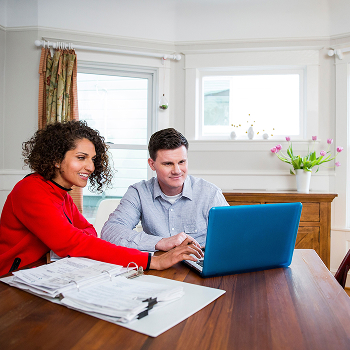Wondering how to buy a used RV? A personal loan may help.
If you need financing for a used RV, a personal loan could be just what you’re looking for. If you choose to apply, we consider your credit score and history, debt-to-income ratio and other factors.
Personal loan details and benefits
We're having trouble displaying personal loan rates. It shouldn't last long, so please try again shortly.


Varying loan amounts
U.S. Bank clients may be eligible to borrow at least $1,000 up to $50,000. Those who aren’t U.S. Bank clients may be able to borrow up to $25,000.

No hidden costs or fees
With a personal loan from U.S. Bank, you’ll pay no origination fees and there is no prepayment penalty. You’re always free to make loan payments in full or make additional payments at any time.

No collateral required
A personal loan doesn’t require your home or car as collateral, so you won’t have to deal with inspections or appraisals.
Not a U.S. Bank client? Explore our checking account options.
Use this personal loan calculator to estimate your monthly payment.
Please fix the following items to continue:
- Enter a valid 5-digit ZIP Code.
- Enter an amount to borrow.
- Enter a loan term.
- Choose a credit score range.
Would you prefer to buy a used RV from a dealership?
Browse and apply for a new or used RV from the dealerships that participate in the U.S. Bank RV financing program. If you’re approved, the dealer will have your pre-approval ready when you arrive for a smoother purchase process.
Tips on buying a used RV from a private seller
Find out more about RVs and loans.
How to choose the right RV
Learn about different RV styles and hit the road in your dream vehicle.
Costs of owning an RV
Consider the long-term costs of RV ownership when budgeting for your purchase.
What’s a good credit score?
Know your score before applying for loans and lines of credit.


